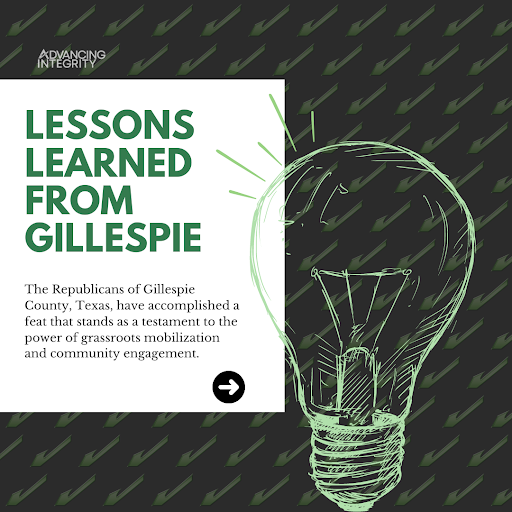The Republicans of Gillespie County, Texas, have accomplished a feat that stands as a testament to the power of grassroots mobilization and community engagement. By hand-counting thousands of paper ballots in their recent GOP primary, the county’s Republicans have displayed the power of an engaged electorate. How exactly did they do it and what can other counties learn from their example?
The decision to pursue a paper-based, hand-counted primary election was not without its challenges. Gillespie County Republican Party Chairman Mo Saiidi resigned when the resolution was initially approved by the Executive Committee, composed of local Precinct Chairs. The narrow 7-6 vote highlighted the division within the party regarding the adoption of such measures.
Preparation
Gillespie County had a head start to many other counties. They were still set up for the necessary precinct-based voting and used paper poll books until recently. The Gillespie County Elections Administrator Jim Riley did insist on using electronic poll books for early voting so the county could promptly post the lists of voters who voted that day.
The seemingly short leap to hand-counting resulted in vast logistical complexities, requiring meticulous planning and coordination at every step. From recruiting and training volunteers to obtaining supplies and establishing procedures, every aspect of the hand-counting process was meticulously orchestrated to ensure its smooth execution. It took over six months of intense planning in conjunction with Gillespie County Elections Administrator Jim Riley and the Office of the Texas Secretary of State (SOS).
David Treibs, a hand-count supporter and precinct chair designed the ballot to fit on a single sheet of paper, front and back. He worked with an SOS approved local printer for quicker access to more ballots if needed and to add an imprint that glows under black lights.
People
Bruce Campbell, the Gillespie County Republican Party Chairman that replaced Saiidi, reflected on his initial skepticism about the feasibility of hand-counting ballots on such a scale. However, his doubts were dispelled as over 250 volunteers, including many previously unaffiliated individuals, rallied together to ensure the integrity of their electoral process.
“To be honest, I was a skeptic,” said Campbell. “I didn’t have a problem with the idea of hand counting. I just didn’t know if we would have the people and the wherewithal to do it.”
Dedicated individuals working in teams of five counted tirelessly throughout the day. These teams were composed of three talliers, one caller, and one watcher. Each of the thirteen polling places required a counting team for the 3,900 ballots cast on Election Day. The designated counting center had as many as 18 teams counting the 4,100 ballots cast during early voting.
Patience
Months of meticulous planning and coordination culminated in over 24 hours of work where volunteers diligently tallied each vote cast. Counting began at 7:00 am on Tuesday and continued until 2:00 am on Wednesday. After some final paperwork was completed, the final tallies were posted to the county website just before 5:00 am.
It was estimated that the teams could count 50 ballots every one and a half hours.
The Texas Election Code requires that once counting has begun, it must continue until completed. Volunteer Tracy Knudsen said, “It was exhausting but so rewarding and what a team effort by all.”
Practicality
Counties wanting to follow in Gillespie’s footsteps should be very cautious. Gillespie is a small county and the Republican Primary ballot had only 24-25 candidate races, many uncontested, and 13 ballot propositions. Chairman Campbell himself understands his county’s process won’t easily translate to larger counties.
“The length of the ballot is a limiting factor,” said Campbell. “It would be tough to [hand count] this big a ballot in a huge county because it takes too many people. We could have used 500.
“It takes more people than you think it does,” he said, adding that it also “takes a lot of logistics.”
It was estimated that the teams could count 50 ballots every one and a half hours. Remember, those are one sheet, front and back, ballots. Larger counties tend to have multiple pages.
In fact, the Travis County GOP tried to hand count all ballots cast during early voting, both in-person and by mail. However, they were unable to secure enough resources to make that a reality. Instead, they hand-counted just the mail-in ballots. While they did achieve some great advances toward integrity, they fell short of what Gillespie was able to achieve.
Going back to hand-counting ballots is not impossible, as clearly shown by the Gillespie GOP, but in many cases it is impractical. That does not mean that counties cannot continue to move in that direction. It simply means that it will take a lot more effort, resources, and people willing to help.
The real lesson learned from Gillespie is the potential effectiveness of grassroots engagement and the power of citizens working together for a common goal. Gillespie County Republicans set an amazing example of planning, diligence, and execution that other counties can follow.

